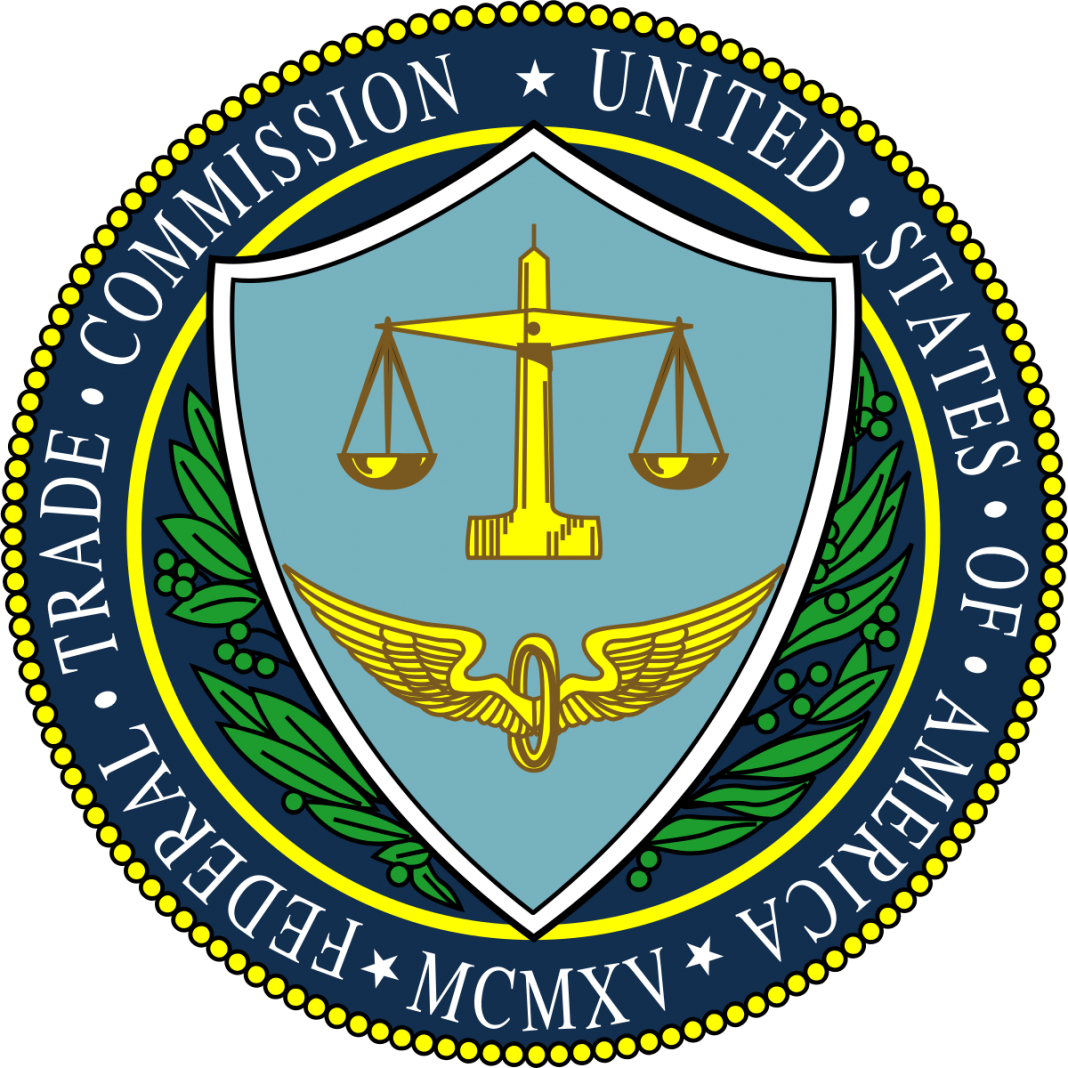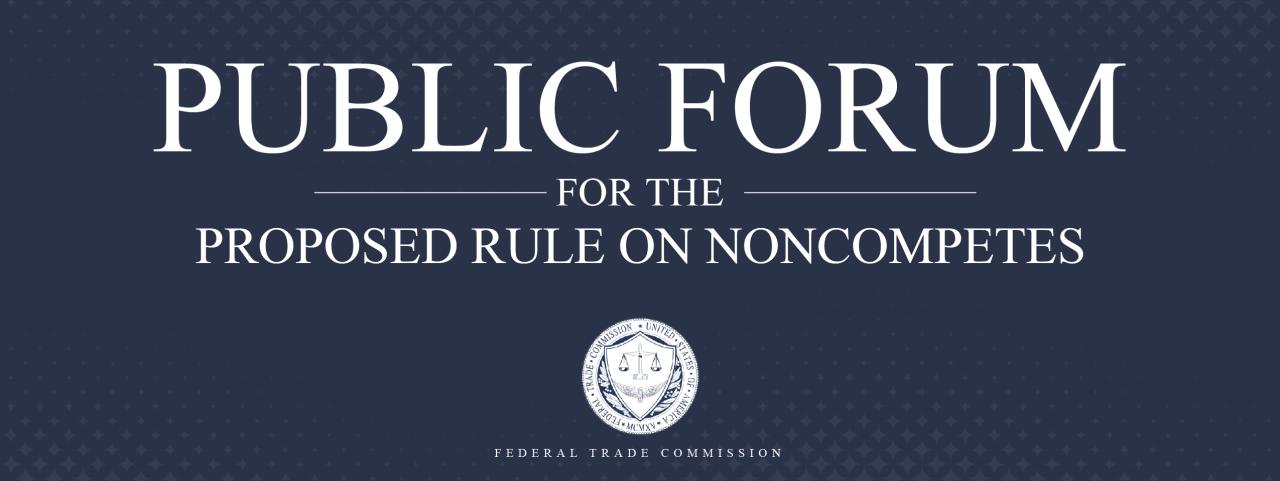
FTC Surescripts Proposed Antitrust Settlement
FTC Surescripts proposed antitrust settlement: Wow, what a rollercoaster! This case throws a spotlight on the often-hidden world of electronic prescribing and the potential for anti-competitive behavior in healthcare. We’re diving deep into the details of this massive settlement, exploring the accusations, the defenses, and ultimately, what it all means for you and me – the patients and the healthcare providers.
The Federal Trade Commission (FTC) alleges that Surescripts, a major player in electronic prescription transmission, engaged in practices that stifled competition and ultimately drove up costs. This isn’t just some legal squabble; it’s a story about market dominance, the power of big data in healthcare, and the fight for fair pricing in the pharmaceutical industry. We’ll unpack the FTC’s arguments, Surescripts’ response, and the potential long-term consequences for everyone involved.
Overview of the FTC Surescripts Proposed Antitrust Settlement
The Federal Trade Commission (FTC) and Surescripts, a major electronic prescribing (e-prescribing) network, reached a proposed settlement in an antitrust case alleging anti-competitive practices. This settlement aims to address concerns about Surescripts’ dominance in the e-prescribing market and its potential impact on healthcare costs and competition. The proposed settlement, if approved, will significantly alter Surescripts’ business practices and potentially reshape the landscape of electronic healthcare data exchange.The FTC alleged that Surescripts engaged in anti-competitive conduct, hindering competition and potentially inflating costs for healthcare providers and ultimately patients.
The core of the allegations revolves around Surescripts’ market power and its use of that power to stifle competition and maintain its dominant position. The settlement seeks to remedy these alleged violations through specific actions and structural changes within Surescripts’ operations.
Alleged Antitrust Violations by Surescripts
The FTC’s complaint accused Surescripts of engaging in several anti-competitive practices. These included imposing exclusivity arrangements that limited the ability of pharmacies and other healthcare providers to use competing e-prescribing networks. Furthermore, the FTC argued that Surescripts’ pricing practices were anti-competitive, leveraging its dominant position to charge excessive fees. The specific details of these allegations involved claims of leveraging its network effects to create barriers to entry for competitors and maintaining a monopoly-like position within the e-prescribing industry.
The FTC argued these actions resulted in higher costs and reduced choice for healthcare providers and, ultimately, patients. Examples might include specific contracts with pharmacies that prevented the use of alternative networks or pricing schemes that were disproportionate to the value provided.
The FTC’s proposed antitrust settlement with Surescripts is a big deal for healthcare tech, raising questions about market dominance and fair competition. It got me thinking about the implications for other rapidly evolving areas like AI in healthcare, particularly the recent expansion of AI in mammography, as seen in the exciting developments with Google’s iCAD AI, detailed here: Google iCAD AI mammography expansion.
This raises similar questions about potential monopolies and the need for regulation to ensure equitable access to these advancements. Ultimately, the Surescripts case might set a precedent for how we approach these emerging technologies.
Potential Impact of the Settlement on the Healthcare Industry
The proposed settlement, if approved, has the potential to significantly impact the healthcare industry. By forcing Surescripts to alter its business practices, the settlement aims to increase competition in the e-prescribing market. This could lead to lower costs for healthcare providers and potentially lower healthcare costs overall. Increased competition might also stimulate innovation in e-prescribing technology and services, benefiting both providers and patients.
For example, smaller, more specialized e-prescribing networks might emerge, offering alternative solutions and potentially more tailored services. Conversely, there’s a possibility that disruption to the established system could lead to temporary instability, requiring healthcare providers to adapt to new systems and workflows. The long-term effects will depend on how effectively the settlement’s provisions are implemented and enforced. The success of the settlement will hinge on whether it genuinely fosters a more competitive environment, ultimately benefiting the entire healthcare ecosystem.
Surescripts’ Business Practices Before the Settlement: FTC Surescripts Proposed Antitrust Settlement
Surescripts held a dominant position in the electronic prescribing (e-prescribing) market prior to the FTC settlement. This dominance, coupled with certain business practices, led to accusations of anti-competitive behavior. Examining these practices provides crucial context for understanding the settlement’s implications for the healthcare technology landscape.Surescripts’ market dominance stemmed from its control over the crucial intermediary role between pharmacies and electronic health record (EHR) systems.
They essentially controlled the flow of e-prescriptions, a critical function for both the efficient dispensing of medications and the broader integration of healthcare data. This control allowed them to leverage their position in ways the FTC deemed anti-competitive.
Anti-competitive Practices Identified by the FTC
The FTC alleged that Surescripts engaged in several practices that stifled competition and harmed consumers. These practices were central to the settlement and involved both their relationships with EHR vendors and pharmacies. The specific allegations focused on actions that limited the ability of competitors to gain a foothold in the market.
Surescripts’ Relationships with EHR Vendors
Surescripts’ contracts with major EHR vendors often included provisions that limited or restricted the ability of those vendors to integrate with competing e-prescribing networks. This effectively created a barrier to entry for potential rivals, hindering their ability to attract both pharmacies and physicians. For example, some contracts may have included exclusivity clauses or unfavorable pricing structures for integrating with alternative platforms.
This ensured Surescripts retained its dominant market share by limiting the options available to EHR providers.
Surescripts’ Relationships with Pharmacies
Similar tactics were allegedly employed in Surescripts’ dealings with pharmacies. By offering preferential pricing or other incentives to those who exclusively used their platform, Surescripts discouraged the adoption of competing e-prescribing services. This created a network effect where the larger Surescripts network incentivized pharmacies to stay within their system, reinforcing their dominance. The FTC argued that this behavior artificially limited competition and ultimately increased costs for consumers and healthcare providers.
Comparison with Competitors, FTC Surescripts proposed antitrust settlement
While Surescripts dominated the e-prescribing market, smaller competitors existed. However, these competitors faced significant hurdles due to Surescripts’ market power and the practices described above. The lack of interoperability and the difficulty in gaining access to major EHR systems and pharmacies hindered the growth of alternative platforms. This made it challenging for competitors to offer viable alternatives and effectively compete with Surescripts’ established network.
The FTC’s action sought to address this imbalance, promoting greater competition and innovation within the e-prescribing sector.
FTC’s Arguments and Evidence
The Federal Trade Commission (FTC) argued that Surescripts’ actions stifled competition in the electronic prescribing (e-prescribing) market, ultimately harming patients and healthcare providers. Their case rested on a combination of legal arguments and substantial evidence demonstrating anti-competitive behavior. The FTC’s approach involved demonstrating market power, anti-competitive conduct, and resulting harm to competition.The FTC’s legal arguments centered on Surescripts’ alleged violations of Section 5 of the Federal Trade Commission Act, which prohibits unfair methods of competition.
Specifically, the FTC contended that Surescripts leveraged its dominant position in the e-prescribing market to engage in anti-competitive practices, ultimately harming consumers and hindering innovation. This involved accusations of both exclusionary and exploitative conduct.
Surescripts’ Market Dominance and Anti-Competitive Conduct
The FTC presented considerable evidence to support its claim that Surescripts held a dominant position in the e-prescribing market. This included data on Surescripts’ market share, showing its overwhelming control over the crucial network connecting pharmacies, physicians, and other healthcare entities. The FTC highlighted Surescripts’ near-monopoly status, arguing that this gave them the ability to manipulate market conditions to their advantage and to the detriment of competitors.
Further, they detailed Surescripts’ business practices, arguing these were designed to exclude rivals and maintain their dominant market share. Examples cited included exclusive contracts with key players and the imposition of restrictive terms on other providers attempting to join their network.
Evidence Presented by the FTC
The FTC’s evidence encompassed a range of data and documents, including internal Surescripts communications, contracts with pharmacies and physicians, and market research reports. Internal emails and memos allegedly revealed Surescripts’ strategic plans to limit the growth of competitors. Contracts showcased allegedly anti-competitive clauses, such as exclusivity agreements preventing pharmacies from working with competing e-prescribing networks. Market share data vividly illustrated Surescripts’ overwhelming dominance, providing concrete evidence of their monopolistic control.
The FTC also likely used economic modeling to illustrate the effects of Surescripts’ actions on pricing and innovation.
Economic Analysis Demonstrating Harm to Competition
The FTC’s economic analysis likely demonstrated how Surescripts’ conduct harmed competition by reducing the number of viable competitors, limiting innovation in e-prescribing technology, and potentially leading to higher prices for consumers and healthcare providers. This might have included counterfactual scenarios, comparing the actual market conditions under Surescripts’ dominance to a hypothetical market with greater competition. The analysis probably focused on quantifying the negative impact of reduced competition on factors like pricing, service quality, and the rate of technological advancements in e-prescribing.
For instance, the analysis may have shown that the lack of competition led to slower adoption of innovative e-prescribing features or higher fees for services. The FTC would have needed to demonstrate a causal link between Surescripts’ actions and the observed harm to competition. This would have involved careful consideration of alternative explanations for the market conditions observed.
Surescripts’ Response and Defense
Surescripts, facing the FTC’s antitrust allegations, mounted a robust defense, challenging the commission’s characterization of its business practices and the resulting impact on the healthcare market. Their response strategically addressed each of the FTC’s claims, aiming to demonstrate that their actions were pro-competitive and ultimately beneficial to patients and the healthcare system as a whole. The core of their defense hinged on arguments related to the value of their services and the competitive landscape within the electronic prescribing market.Surescripts’ primary argument centered on the assertion that their services improved efficiency and interoperability within the healthcare system.
They highlighted the significant technological advancements they facilitated, emphasizing the positive impact on patient safety and the reduction of prescription errors. Furthermore, they argued that their market share, while substantial, didn’t translate to anti-competitive behavior, citing the presence of competing electronic prescribing networks and the ability of pharmacies and physicians to utilize alternative systems.
Surescripts’ Rebuttal of Antitrust Claims
Surescripts directly refuted the FTC’s claim of monopolistic practices. They argued that the FTC’s analysis failed to adequately account for the complexities of the electronic prescribing market, overlooking the significant investments made in infrastructure and technology. They countered the allegations of exclusionary conduct by demonstrating their commitment to interoperability and their willingness to work with other players in the industry.
Their defense included presenting evidence of collaborations and partnerships, highlighting their efforts to foster a more integrated healthcare ecosystem. A key element of their defense involved emphasizing the value proposition of their services – faster, more reliable prescription processing – which they argued benefited both providers and patients. They maintained that their pricing strategies were justified by the substantial costs associated with maintaining their network and ensuring its reliability.
Proposed Remedies and Counter-Arguments
Rather than accepting the FTC’s proposed remedies, Surescripts offered alternative solutions that they believed would address the FTC’s concerns without unduly restricting their business operations or hindering innovation. These counter-arguments centered on the idea that the proposed remedies were overly broad and potentially harmful to the very efficiency and interoperability they sought to improve. For instance, if the FTC proposed a specific data-sharing mandate, Surescripts might counter with a proposal for a less restrictive data-sharing agreement that still ensured transparency while protecting sensitive patient information.
They might also argue that the FTC’s proposed structural remedies, such as divestiture, were unnecessary given their commitment to continued interoperability and collaboration. The essence of their counter-proposals was to achieve the stated goals of the FTC without imposing significant burdens on their operations or potentially harming the broader healthcare ecosystem.
Impact on Pharmacies and Healthcare Providers

Source: usaherald.com
The FTC’s settlement with Surescripts, aiming to curb anti-competitive practices in electronic prescribing, carries significant implications for pharmacies and healthcare providers. The changes resulting from this settlement could reshape the dynamics of prescription drug pricing and the overall electronic prescribing landscape, potentially impacting both businesses and patients. The extent of this impact will depend on how effectively the settlement is implemented and monitored.The settlement’s impact on pharmacies’ ability to negotiate prices is a key area of concern.
Previously, Surescripts’ control over the electronic prescribing system gave them significant leverage in negotiations. The settlement aims to dismantle this power, potentially leading to a more competitive marketplace where pharmacies have greater bargaining power with pharmaceutical companies. This could result in lower prices for drugs, though the extent of price reductions will depend on the responsiveness of drug manufacturers to increased competition.
For example, if pharmacies can now negotiate directly with multiple drug wholesalers, they might be able to secure better prices than they could under the previous system.
Effect on Prescription Drug Costs for Consumers
The settlement’s effect on the cost of prescription drugs for consumers is a complex issue. While increased competition among pharmacies could theoretically lead to lower prices, the impact might be indirect and not immediately apparent. The success of this outcome depends on several factors, including the willingness of pharmaceutical companies to lower their prices in response to increased pharmacy bargaining power, and the ability of pharmacies to pass on any savings to consumers.
For instance, if a pharmacy negotiates a lower price for a drug but doesn’t reduce its dispensing fee, the consumer might not see any actual cost savings. Furthermore, some argue that the real cost savings might be absorbed by the pharmacies’ increased profit margins. Predicting the exact impact on consumer costs requires monitoring the market closely after the settlement is fully implemented.
Changes in Electronic Prescribing Dynamics
The settlement is expected to significantly alter the dynamics of electronic prescribing. Before the settlement, Surescripts held a dominant position, potentially limiting innovation and competition in the e-prescribing space. The settlement aims to create a more open and competitive market, encouraging the development of alternative e-prescribing platforms and potentially leading to improved interoperability between different systems. This could translate to a smoother, more efficient process for healthcare providers and potentially better patient care.
| Aspect | Before Settlement | After Settlement | Impact |
|---|---|---|---|
| Market Dominance of e-prescribing | Surescripts held a significant market share, potentially limiting competition. | Increased competition expected with the emergence of alternative platforms. | Greater choice and innovation in e-prescribing technology. Potential for improved interoperability. |
| Pharmacy Negotiation Power | Limited negotiation power with pharmaceutical companies due to Surescripts’ control. | Increased potential for pharmacies to negotiate better prices with drug manufacturers and wholesalers. | Potential for lower drug prices for pharmacies, but the impact on consumer prices is uncertain. |
| Data Sharing and Transparency | Concerns about data sharing practices and lack of transparency. | Increased scrutiny and potential for greater transparency in data sharing practices. | Improved data security and potential for better data utilization for research and public health initiatives. |
| Innovation in e-prescribing | Limited innovation due to lack of competition. | Increased potential for innovation and development of new e-prescribing solutions. | Potential for more efficient and user-friendly e-prescribing systems. |
Implications for Future Antitrust Enforcement
The FTC’s settlement with Surescripts carries significant weight, setting a precedent for how antitrust enforcement will likely proceed in the increasingly complex landscape of electronic health information exchange (e-HIE). This case highlights the potential for seemingly innocuous business practices to stifle competition and ultimately harm consumers – in this instance, pharmacies and healthcare providers. The implications extend beyond Surescripts itself, influencing how other companies operating in similar markets will conduct their business and how regulators will approach future investigations.The settlement demonstrates a heightened awareness by the FTC of the potential for anti-competitive behavior within the healthcare technology sector.
The agency’s aggressive pursuit of this case signals a proactive approach to preventing monopolies and ensuring fair competition in the vital arena of e-HIE. This is particularly relevant given the growing importance of interoperability and data sharing in modern healthcare. The specifics of the settlement, including the consent decree’s requirements for Surescripts to alter its business practices, will serve as a guide for future enforcement actions.
Increased Scrutiny of Data Exchange Practices
The Surescripts case underscores the FTC’s focus on the potential for anti-competitive practices within the electronic exchange of health information. The settlement highlights the vulnerability of businesses that control crucial data flows, particularly when those businesses leverage their position to limit competition or impose unfavorable terms on market participants. Future investigations may concentrate on the pricing structures, data sharing agreements, and market access policies of companies involved in e-HIE, examining them for potential anti-competitive effects.
This will likely lead to more stringent reviews of mergers and acquisitions in the sector, with regulators paying close attention to the potential impact on data flow and competition.
Enhanced Regulatory Guidance on Interoperability
The settlement’s impact extends to regulatory efforts aimed at improving interoperability in healthcare. The FTC’s actions demonstrate the importance of regulatory frameworks that both encourage innovation in e-HIE and prevent anti-competitive behavior. This case may influence the development of clearer guidelines and stricter enforcement regarding data sharing agreements, ensuring that such agreements do not inadvertently restrict competition or impede the free flow of electronic health information.
The outcome could potentially lead to increased collaboration between the FTC and other regulatory bodies, such as the Office of the National Coordinator for Health Information Technology (ONC), to harmonize regulatory approaches and enhance oversight of the e-HIE market.
Impact on M&A Activity in Healthcare Technology
The Surescripts settlement will likely impact mergers and acquisitions in the healthcare technology sector. Companies considering mergers or acquisitions will need to conduct more thorough antitrust analyses, paying closer attention to the potential for the combined entity to control critical data flows or exert undue influence on market participants. Regulators are likely to scrutinize such transactions more carefully, considering the potential anti-competitive effects on e-HIE and other related services.
This heightened scrutiny may lead to more stringent conditions imposed on mergers and acquisitions to mitigate the risk of reduced competition. For example, divestitures of specific assets or business units might be required to ensure a competitive market landscape post-merger.
Alternative Scenarios Without the Settlement

Source: ftc.gov
The FTC’s settlement with Surescripts avoided a potentially lengthy and costly antitrust lawsuit. Had the FTC opted to pursue litigation instead, the outcome would have been uncertain, with significant ramifications for both parties and the healthcare industry as a whole. Several alternative scenarios could have unfolded, each with its own set of consequences.The decision to settle versus litigate involved a complex cost-benefit analysis for both the FTC and Surescripts.
A protracted legal battle would have demanded substantial resources in terms of legal fees, expert witness testimony, and staff time. The potential for reputational damage, regardless of the final outcome, also weighed heavily in the decision-making process.
Potential Outcomes of Litigation
A full-blown antitrust trial could have resulted in several different outcomes. The FTC might have won a complete victory, potentially leading to significant fines, structural remedies (like divestiture of certain business units), and injunctive relief to prevent future anti-competitive practices. Alternatively, Surescripts could have prevailed, potentially dismissing the FTC’s claims entirely or achieving a significantly reduced settlement. A drawn-out trial could also have resulted in a negotiated settlement similar to, or even less favorable than, the current agreement, but only after considerable expenditure of time and resources.
The uncertainty surrounding these potential outcomes made settlement a more attractive option for both sides.
Costs and Benefits of Litigation for the FTC
For the FTC, the costs of litigation would have included substantial legal fees, the allocation of significant staff time to the case, and the opportunity costs associated with diverting resources from other investigations. However, a successful outcome could have yielded significant fines, deterring future anti-competitive behavior in the healthcare IT sector and setting a precedent for future enforcement actions.
The FTC’s proposed antitrust settlement with Surescripts is a big deal for healthcare data sharing, impacting everything from prescription fills to patient records. This raises serious questions about data security, especially considering the stringent requirements outlined in the HHS healthcare cybersecurity framework for hospitals, as detailed in this helpful article: hhs healthcare cybersecurity framework hospital requirements cms.
Ultimately, the Surescripts settlement needs to address these security concerns to ensure patient information remains protected.
The potential benefits of a strong legal victory would have had a significant impact on the overall effectiveness of the FTC’s enforcement efforts. Consider the Microsoft antitrust case in the late 1990s – the lengthy litigation and eventual settlement had a profound and lasting impact on the tech industry’s practices. The FTC’s case against Surescripts, while smaller in scale, held similar potential for wide-ranging effects.
Costs and Benefits of Litigation for Surescripts
For Surescripts, the costs of litigation would have been substantial, including hefty legal fees, potential reputational damage, and the disruption to its business operations. A negative outcome could have led to significant financial penalties and potentially damaging changes to its business model. However, a successful defense could have protected its market position and avoided costly changes. The potential disruption to business operations during a lengthy trial also posed a significant risk, impacting the company’s ability to serve its customers and maintain its market share.
The FTC’s proposed antitrust settlement with Surescripts is a big deal for the healthcare industry, raising questions about market competition and access. It makes you wonder about the future of healthcare giants, especially considering the recent news about Walmart Health’s closures; check out this article on the company’s healthcare strategy, despite Walmart Health’s closure, the company healthcare destination Scott Bowman , for some interesting perspectives.
Ultimately, the Surescripts settlement could significantly impact how these large players navigate the changing landscape.
This risk is similar to the impact faced by companies like Google during their own antitrust battles, where the legal processes themselves often consume vast amounts of time and resources.
Comparison of Settlement and Litigation Impacts
The settlement offers a degree of certainty and avoids the risks and uncertainties associated with a lengthy and unpredictable legal battle. While the settlement requires Surescripts to make changes to its business practices, it avoids the potentially much greater financial penalties and reputational damage that could have resulted from an adverse court ruling. Furthermore, the settlement allows the FTC to allocate its resources to other important enforcement priorities, rather than tying up significant personnel and funding in protracted litigation.
The speed and efficiency of the settlement allowed for a quicker resolution and reduced the overall uncertainty for the entire healthcare industry. In contrast, a drawn-out court case could have created years of uncertainty, negatively impacting market stability and innovation within the electronic prescription market.
Illustrative Example: A Hypothetical Pharmacy’s Experience
This section details how a hypothetical independent pharmacy, “Main Street Pharmacy,” might have been affected by the FTC’s proposed settlement with Surescripts. We’ll examine the changes in their operational costs and revenue streams, and their subsequent response to the new market dynamics.Main Street Pharmacy is a small, family-owned business serving a primarily elderly population in a rural community. Before the settlement, they relied heavily on Surescripts’ electronic prescribing network for medication refills and new prescriptions.
They paid significant fees to Surescripts for access to the network, fees that were a substantial portion of their operational budget. They also experienced challenges with the prior system’s lack of transparency regarding pricing and limited options for alternative networks.
Operational Cost Changes
The FTC settlement aimed to increase competition and transparency in the electronic prescribing market. For Main Street Pharmacy, this translated to several changes. First, the settlement potentially lowered their fees for using Surescripts, opening the possibility of exploring other e-prescribing networks at potentially lower costs. Second, the increased transparency in pricing allowed them to more accurately budget for these expenses and potentially negotiate better rates with various providers.
This improved their cost predictability and reduced financial uncertainty. Third, the settlement likely led to improved interoperability between different e-prescribing systems, simplifying their workflow and reducing the time spent on administrative tasks.
Revenue Stream Changes
While the direct impact on revenue might be less immediate than the cost savings, the settlement indirectly boosted Main Street Pharmacy’s revenue. The improved efficiency due to lower operational costs and streamlined workflows allowed them to dedicate more time to patient care and customer service. This enhanced their reputation and customer loyalty, leading to increased prescription volume and improved revenue.
Moreover, the settlement’s focus on interoperability might have attracted new patients who previously faced difficulties transferring prescriptions from other providers.
Pharmacy’s Response to Changes
Main Street Pharmacy actively researched alternative e-prescribing vendors post-settlement to identify more cost-effective options. They engaged in more detailed price negotiations with Surescripts and other providers, leveraging the increased transparency to secure better deals. They also invested in additional staff training to ensure efficient use of the new systems and fully leverage the benefits of improved interoperability. Finally, they enhanced their customer service strategies, focusing on personalized care to maintain and grow their patient base, capitalizing on the increased efficiency afforded by the settlement’s positive effects.
This proactive approach allowed Main Street Pharmacy to adapt effectively and even gain a competitive advantage in their local market.
Closure
The FTC’s settlement with Surescripts sends a clear message: anti-competitive behavior in the healthcare industry won’t be tolerated. While the specifics of the settlement are complex, the overall impact is significant. This case sets a precedent for future antitrust enforcement and could lead to increased transparency and fairer pricing in the electronic prescribing market. It’s a win for competition, but the long-term effects on patients and providers remain to be seen.
Keep an eye on this space – this is far from over!
FAQ Summary
What exactly does Surescripts do?
Surescripts is a company that facilitates the electronic transmission of prescriptions between doctors and pharmacies. They essentially act as a middleman.
How could Surescripts’ actions harm consumers?
Anti-competitive practices can lead to higher prescription drug costs for consumers due to reduced competition among pharmacies.
What penalties did Surescripts face?
The settlement details specific changes to Surescripts’ business practices, but doesn’t involve a large monetary penalty. The focus is on preventing future anti-competitive behavior.
Will this affect my ability to get prescriptions filled?
The settlement aims to improve competition, so theoretically, it should not directly impact your ability to get prescriptions filled, but might lead to changes in pricing and pharmacy networks over time.





